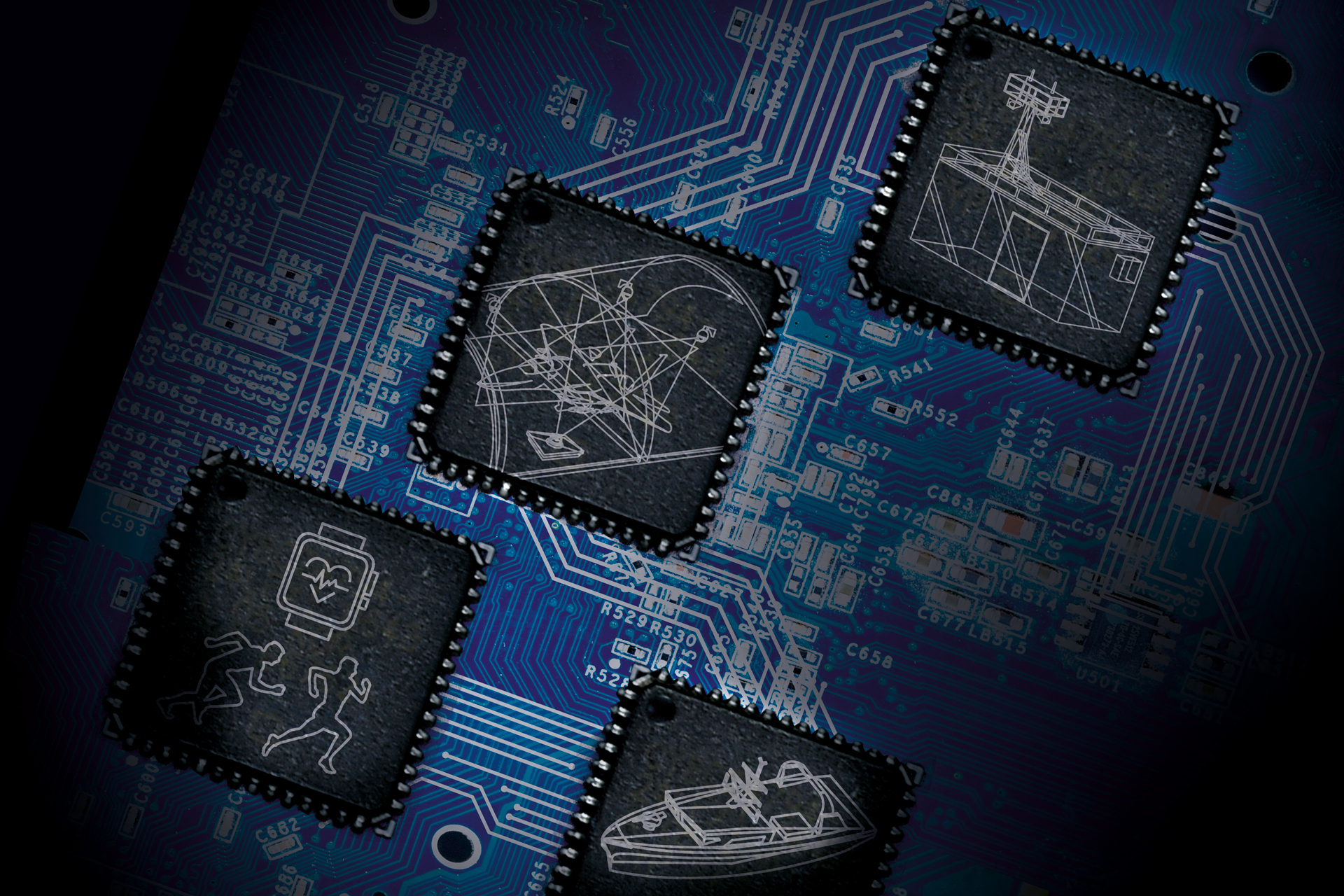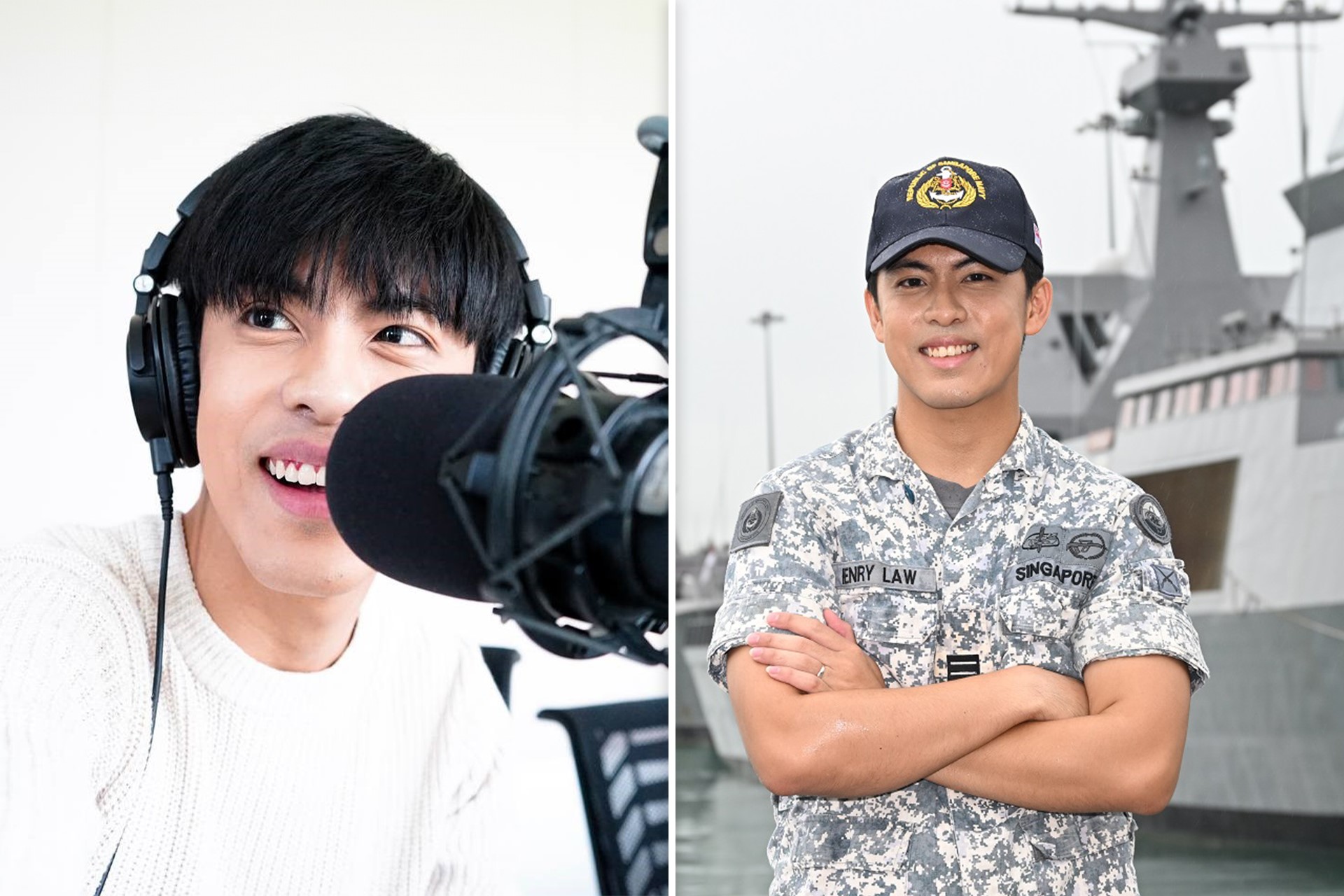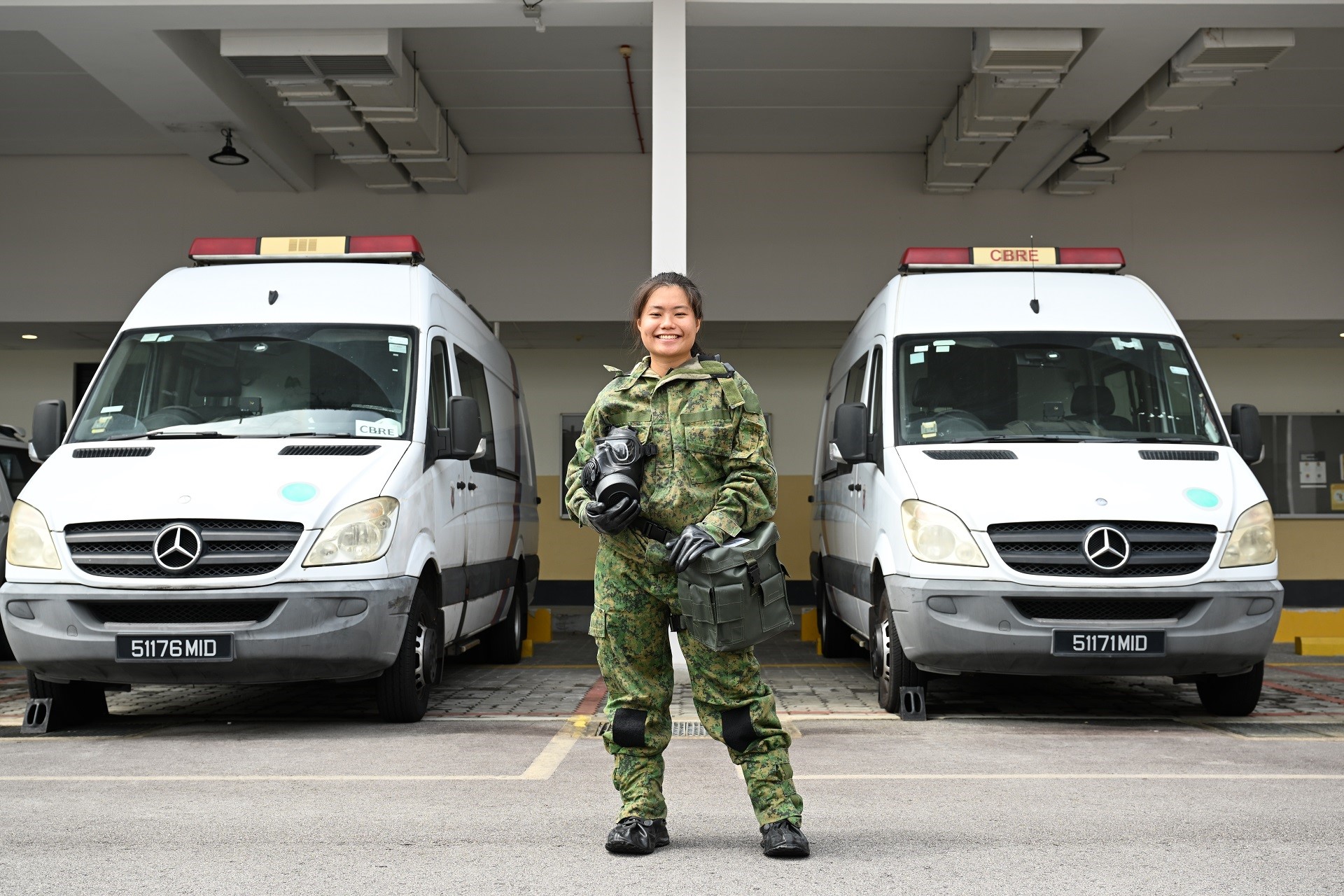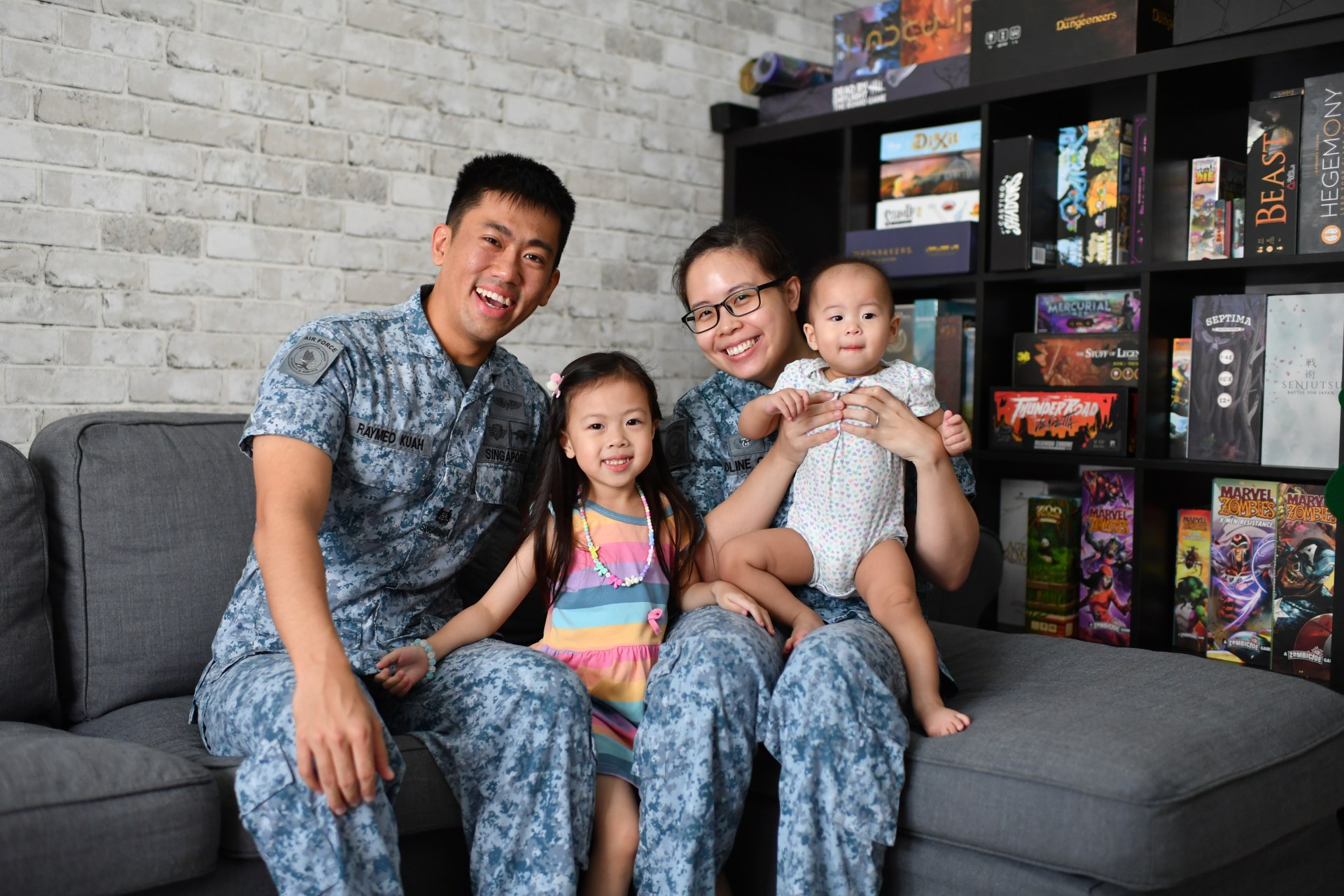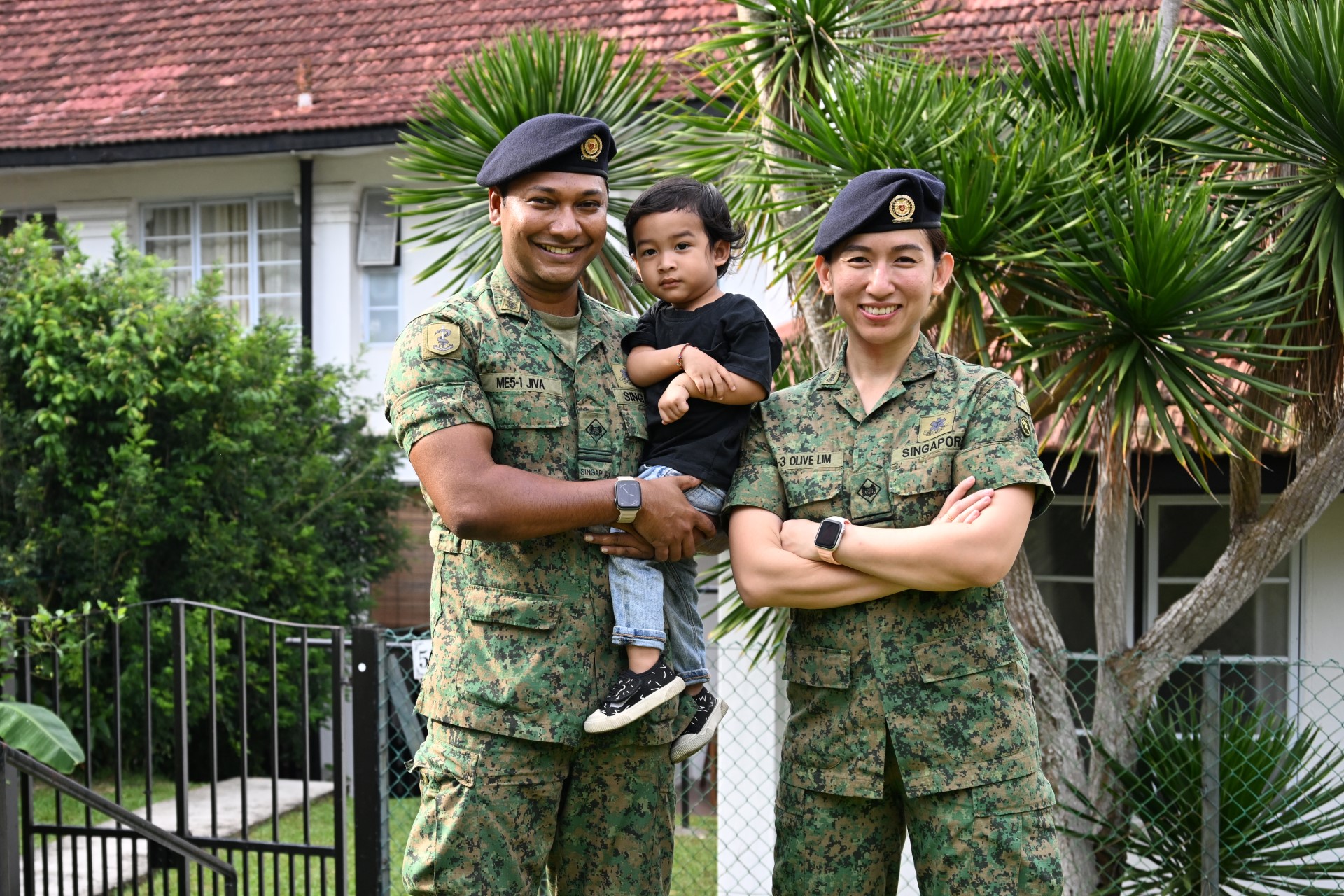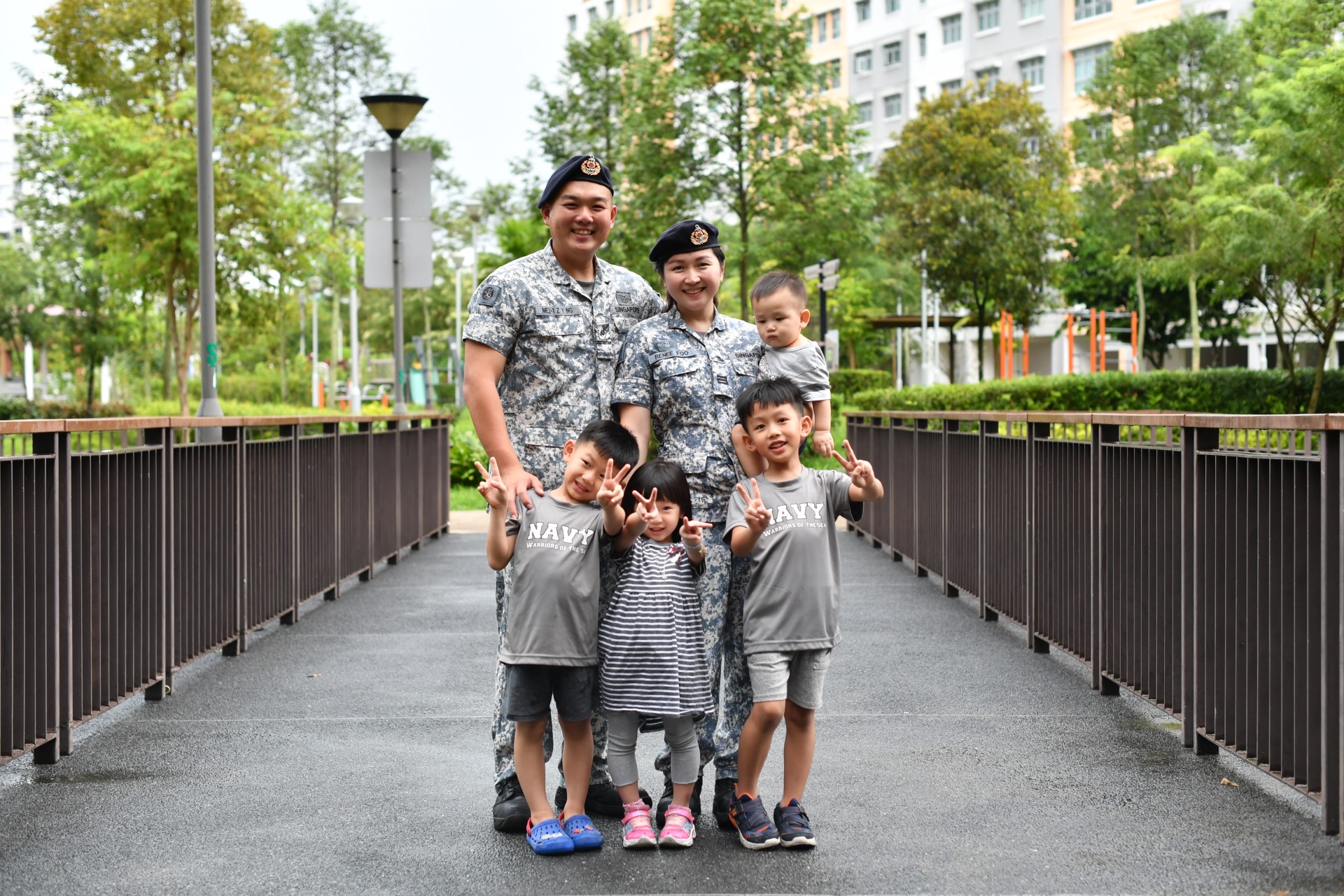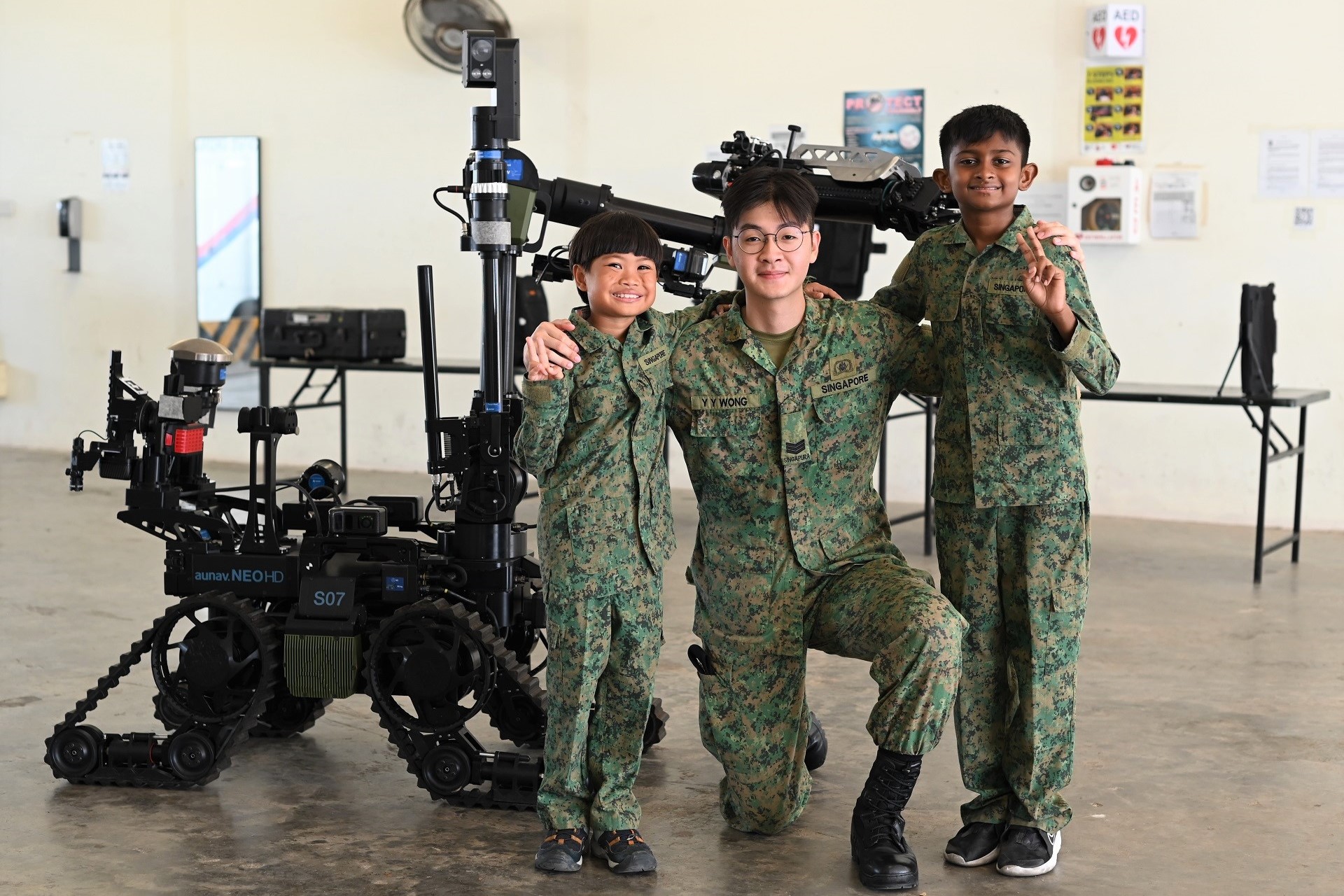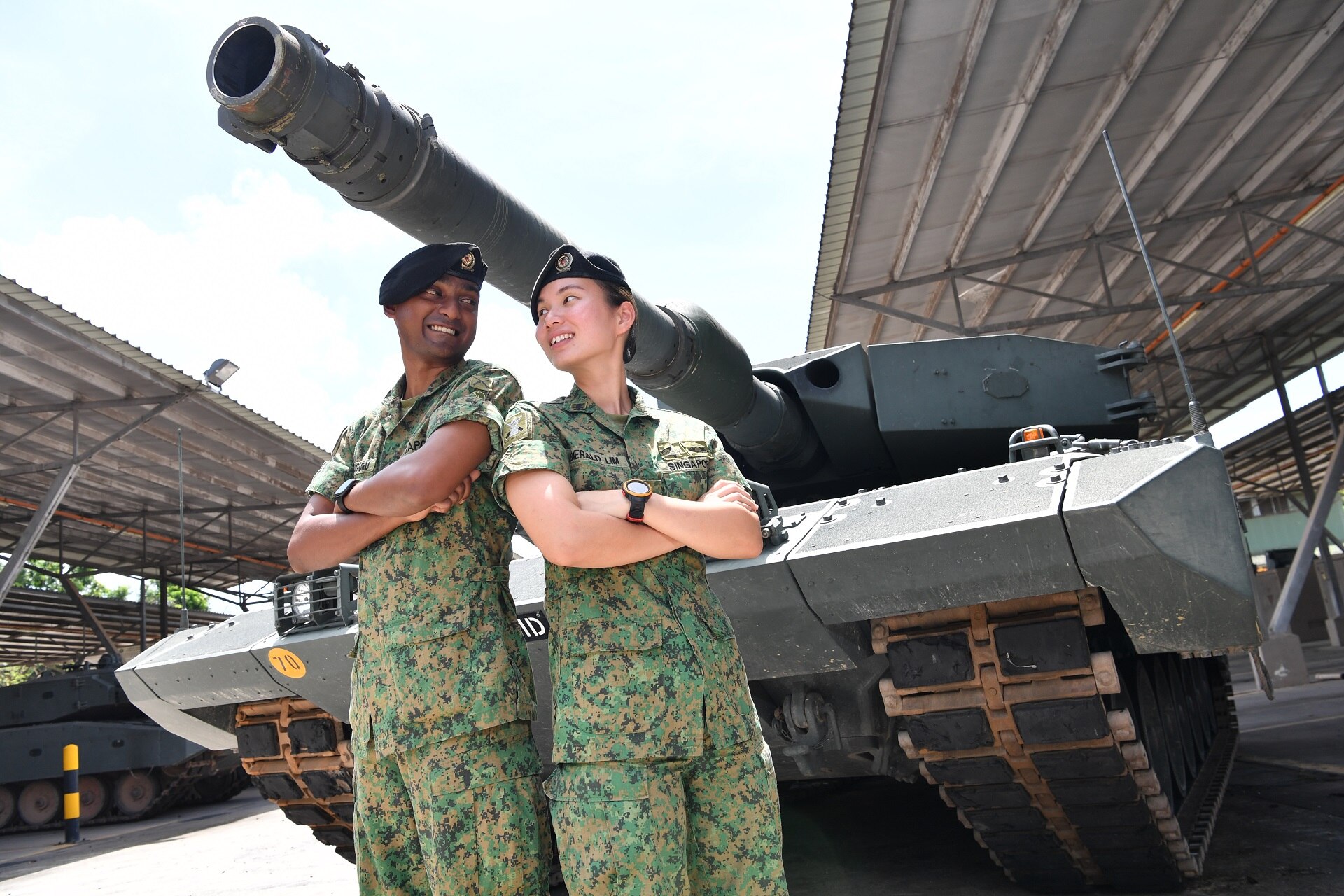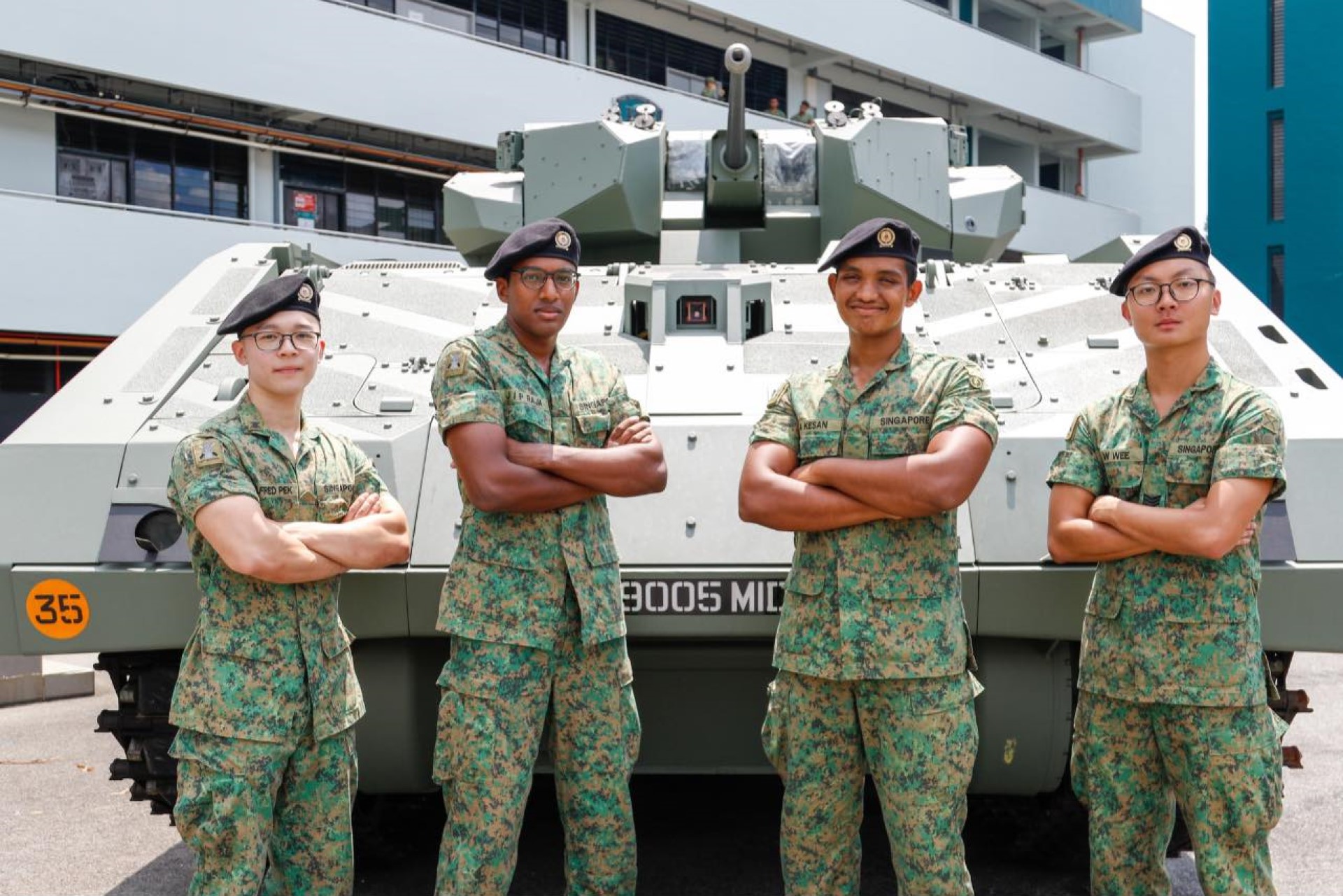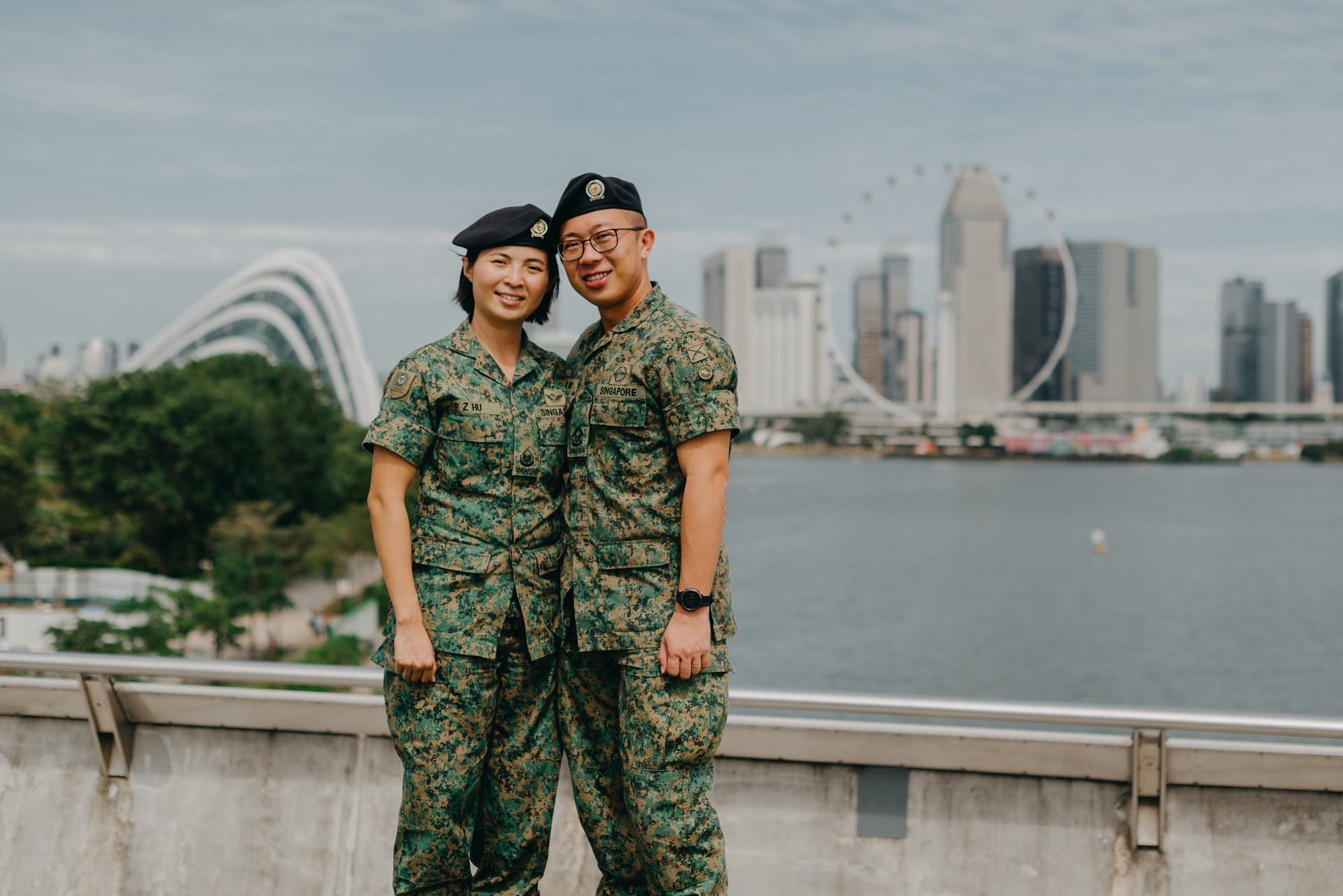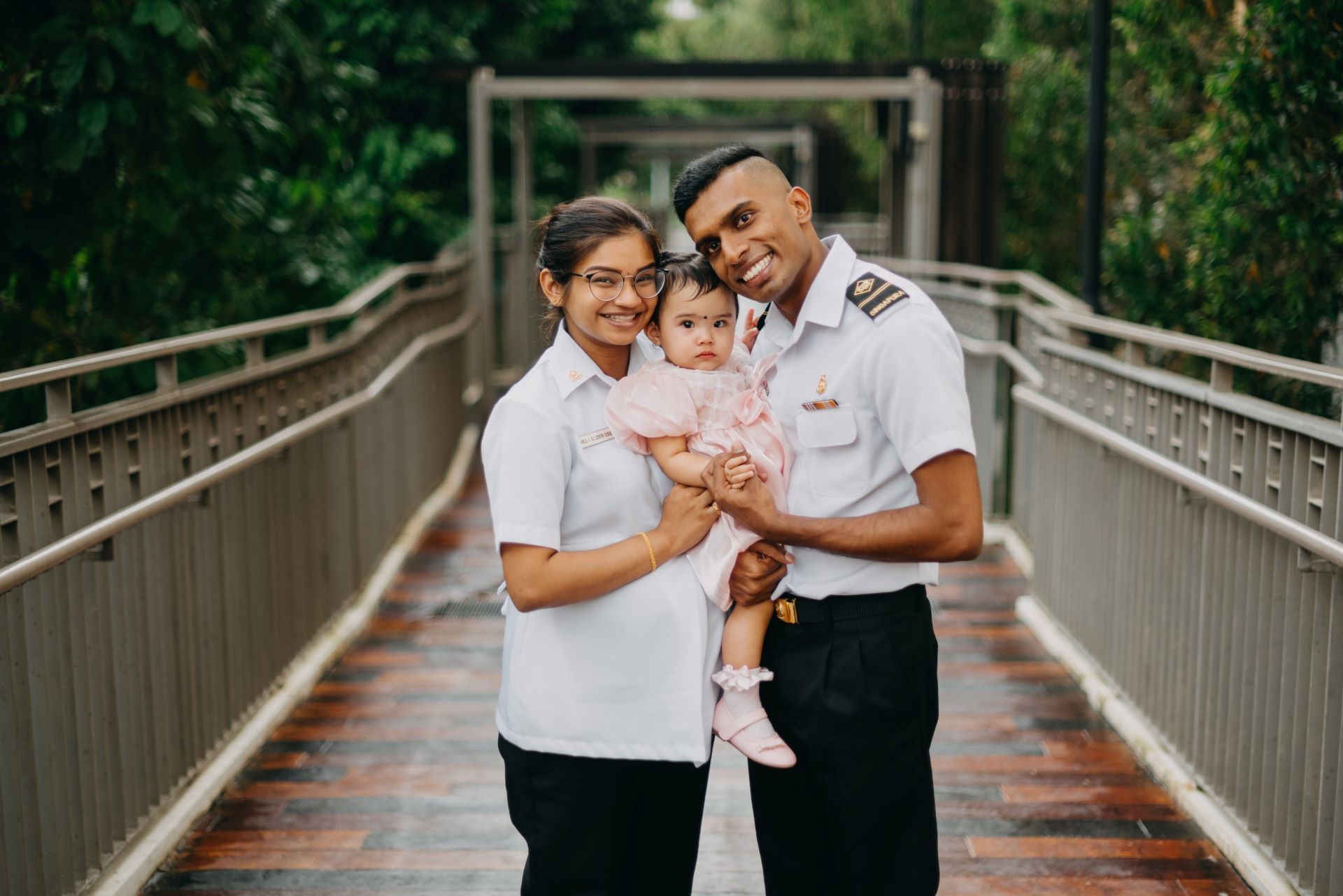The future is looking smart as the Ministry of Defence (MINDEF) looks to new technologies to bolster Singapore's defences.
What does it take to defend Singapore, a small country with few resources apart from its people? Especially when even that one resource is shrinking due to low birth rates.
This was one of the key questions asked at the Committee of Supply debates this year by Minister for Defence Dr Ng Eng Hen. "How much should we invest in building a strong Singapore Armed Forces (SAF)? How much can we afford?"
The fact that the Government has invested steadily in defence over the past few decades, and that the SAF has grown into a modern, professional fighting force, is no secret. Accordingly, defence accounts for a large part of Government spending.
Steady spending
Even as security threats continue to evolve, MINDEF does not see the defence budget rising in the next decade. This is possible because of the steady investments made towards defence in the past.
"We can maintain the SAF's capabilities with defence spending that keeps pace with inflation (around three to four percent each year)," said Dr Ng at the debate.
This is despite other countries having to increase their spending on defence in recent years to modernise their armed forces to meet new security threats.
"Singapore need not increase its defence spending radically to play catch-up," said Dr Ng.
In fact, the percentage of Government expenditure that goes towards defence has fallen over the past three decades. At its height, the Government spent almost 30 percent of its budget on defence. That figure is now about 19 percent.
Looking ahead
On the back of low birth rates and a greying population, Singapore will face dwindling manpower numbers. To meet the security demands of the future, MINDEF and the SAF are making headway into smart technologies and have begun the process of integrating them into operations.
Among the initiatives are unmanned systems for the surveillance and patrol of key installations and territorial waterways; drone systems for military runway maintenance and airbase security; and wider use of simulation technology in training troops for homeland security operations.
Some of the future systems are already here: the new Littoral Mission Vessels (LMV), which will replace the ageing Patrol Vessels (PV), are designed to be able to do more but with less crew.
While the PVs require 30 sailors to run, the larger LMVs are operated by a crew size of just 23. This is because of technology that reduces the number of crew needed to carry out shipboard operations.
For example, starting the twin-engine PVs requires sailors to access the engine compartment to start manually. On the quad-engine LMV, the same process can be done from the bridge. Fault diagnosis is also handled automatically on the LMVs.
"Through innovation and better work processes, the SAF saved about $200 million last year, the highest in the last four years... For instance, the new LMVs will cost around $65 million less for the whole fleet to maintain across their lifetime.
"The LMVs are much more capable than the PVs but will cost less. Why? Because they… (require) less crew and are more efficient to maintain," said Dr Ng.
Smart tech
On land, the Army will use Unmanned Watch Towers (UWTs) on Jurong Island. The sea-facing UWT has advanced cameras that keep watch over the coastal waters off Jurong Island, and can automatically detect threats.
The first UWT was deployed in March and another two are expected to be operational by September. With the UWTs, manpower demand for soldiers stationed on Jurong Island for security operations will be reduced by up to 30 percent.
"(The) most impressive (feature) of the UWT is not the eyes but the brain of the system. Today, we employ data analytics and pattern matching to alert the operator on potential threats. The operator is then able to do a more detailed analysis of the situation," said Colonel Dinesh Vasu Dash, Commander 2nd People's Defence Force.
At sea, the Republic of Singapore Navy (RSN) is developing Unmanned Surface Vessels (USVs) to help with patrols in territorial waters. There are three types of USVs in the pipeline - one for coastal patrols, one for underwater mine detection and another for mine disposal.
When operational, the USVs will reduce the cost and manpower it takes to mount sea patrols. The move to USVs will also free up the manned warships for more complex tasks further afield.
The Coastal Defence USVs are expected to eventually take over patrols in the Singapore Strait, a job currently tasked to the PVs and LMVs.
Major Lim Yoong Seet, Officer Commanding, Unmanned Underwater Systems at 194 Squadron, explained: "Having the USVs will improve the efficiency of our mine detection and neutralisation capabilities. It also saves on manpower."
Currently, these operations are carried out by Mine Countermeasure Vessels, which are each crewed by 30 sailors. On the other hand, each USV requires only a two-man team to operate remotely.
To better safeguard the skies, the Republic of Singapore Air Force (RSAF) has been trialling the use of drones for base defence. It is envisioned that a fleet of drones be deployed for counter-drone operations as well as runway inspection.
These drones will enhance the RSAF's existing capabilities to take down errant drones intruding on protected airspace around RSAF airbases.
Drones could also potentially replace the current process of runway inspection that is carried out manually, reducing manpower and time taken. In addition, Unmanned Ground Vehicles can be deployed to assist in repair operations.
Another innovation being looked into is a system to automate aircraft inspection, cutting the time needed by RSAF engineers as well as the turnaround time to ensure that aircraft are fit for flight.
The RSAF's plan is to install a web of cameras in aircraft hangars that will feed visuals of the aircraft surface to a computer running specialised software.
Using algorithms and machine learning techniques, the software will identify areas on the aircraft that require rectification or further human intervention.
"In the envisaged Smart Airbase, we will see more automation and unmanned technologies in various aspects of airbase operations. Leveraging technologies such as data analytics and artificial intelligence will also revolutionise the way we fight, (and) enable us to be more effective," said Military Expert (ME) 5 Tommy Ong, a branch head in the Air Plans Department.
Efficient mobilisation
Today, the SAF is a formidable force capable of defending Singapore and its people. It also contributes to multinational operations abroad, helping to boost global security.
At home, the SAF is ready to respond when needed. Over two days in January, about 8,000 troops took part in the largest mobilisation exercise since 1985. As part of the exercise, the soldiers successfully worked with Home Team personnel to contain a simulated terrorist attack at the Singapore Sports Hub.
While mobilisation exercises are nothing new and the SAF conducts them routinely to test the readiness of its units, the mobilisation in January saw the use of several new technologies at the Selarang Mobilisation and Equipping Centre (MEC) to ease the process.
For example, automated in-processing kiosks meant that the reporting Operationally Ready National Servicemen (NSmen) can simply scan their identity cards to register their attendance. They will then receive a slip that shows them the equipment they need to draw from the stores.
The drawing of weapons and equipment, too, is tracked electronically, and commanders are constantly updated on the status of the mobilisation, tracking unit strength and equipping levels in near real-time.
Improving the NS experience
Apart from quicker mobilisations, Full-time National Servicemen and NSmen can also expect changes in how they are trained and deployed, as the SAF leverages technology.
One of the changes is a pilot scheme in which NSmen can use wearable devices at SAF Fitness Conditioning Centres and SAFRA gyms for their Individual Physical Proficiency Test Preparatory Training, or IPT, sessions.
"As long as they achieve the required calories and intensity, we will consider it a valid IPT session. This is a signifcant shift, giving NSmen choice, convenience and empowerment in improving their fitness," said 2nd Minister for Defence Ong Ye Kung.
Enhancing security at home
As the SAF looks to enhance internal processes and boost training efficiency, it also has its eye set on how to better deal with the serious threat of terrorism.
Over the past few years, the SAF has been reorganising, training and equipping itself to respond, should the unthinkable happen in Singapore.
Two key efforts were the setting up of the Island Defence Training Institute (IDTI) - Centre of Excellence for Island Defence Training, and joint training by the SAF and Singapore Police Force (SPF).
Besides training servicemen for homeland security operations, IDTI also trained BMTC trainers who, from this year, will teach all recruits to be first responders during a crisis. In addition, the SAF and SPF will be conducting routine joint training sessions with a focus on equipping soldiers with the skills to perform homeland security operations.
Joining global efforts
Apart from investing in security at home, Singapore's defence forces will continue to be involved in international efforts to defeat terrorism at its source.
The SAF will be deploying troops to Iraq later this year to help train the Iraqi Security Forces in countering improvised explosive devices, handling tactical weapons and executing combat tactics.
Closer to home, the SAF is providing assistance to the Philippine Army's Special Operations Command on counter-terrorism efforts. In addition, the SAF stands ready to offer its Information Fusion Centre as a resource for the Sulu Sea joint patrols by Indonesia, Malaysia and the Philippines.
Building confidence
Even as the SAF builds up its capabilities to deal with new and emerging threats, the consensus is that Singapore cannot do this alone. It has to seek partnership and collaboration with other countries in order to deal effectively with threats such as terrorism.
Singapore chairs ASEAN this year, and with that comes the chair position for the ASEAN Defence Ministers' Meeting. The agenda is clear: counter-terrorism; confidence-building measures and a code for unplanned encounters at sea and air; and ways to deal with Chemical, Biological and Radiological threats.
On the global front, Singapore has achieved new milestones. "Both the RSN and the RSAF conducted bilateral exercises in Guam, United States (US) for the first time last year," said Dr Ng.
"With China, we will build on the positive momentum from the visit of Chinese Defence Minster Chang Wanquan earlier this year and deepen ties with the People's Liberation Army."
Singapore and India have also pledged to do more together with the Navy Bilateral Agreement that will see the deepening of defence ties between the two states. The two sides will come together for joint naval exercises, especially in the Andaman Sea.
Boosting resilience
All of these defence initiatives will come to naught if Singaporeans are not prepared to do their part for Total Defence.
Citing fake news and the increasingly globalised experience of today's youth as "potential fault-lines" in Singapore's social fabric, Senior Minister of State for Defence Dr Mohamad Maliki Bin Osman noted that there was a need to strengthen social defence by boosting social and psychological defences.
"This means growing our common spaces by interacting with people of different backgrounds, speaking up against attempts to sow discord and helping those in need," said Dr Maliki at the budget debates.
One avenue for Singaporeans to contribute to the country's defence is by joining the SAF Volunteer Corps (SAFVC), which gives women, new citizens and first-generation Permanent Residents the opportunity to serve. Since its launch in 2014, the SAFVC has trained more than 600 volunteers.
From this year, volunteers will be able to take on 15 additional roles in the SAF, provided they meet the requirements, said Dr Maliki.
Strong will
In concluding his speech, Dr Ng said: "A strong SAF was not built or maintained by happenstance or even good intentions.
"For each generation, it will require a conscious and a deliberate decision. It will require sacrifices to commit resources and of themselves. Previous generations took that hard decision.
"If each generation reaffirms and renews its commitment, then a strong SAF will continue to keep Singapore safe and sovereign with a secure future for another generation."
